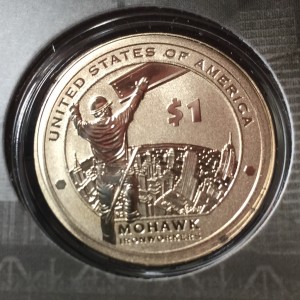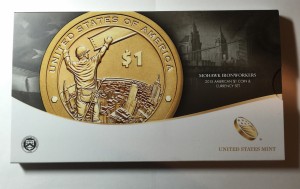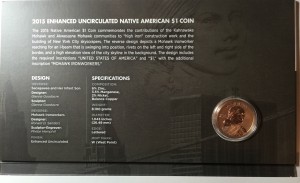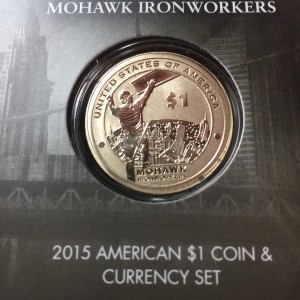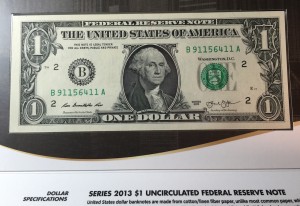Through 2008, the reverse featured a soaring eagle by U.S. Mint sculptor-engraver Thomas D. Rogers. Starting in 2009, the reverse was changed as part of the Native American $1 Coin Act (Pub.L. 100-82) signed into law by President George W. Bush. Under the law, the reverse of the one dollar coin “shall depict images celebrating the important contributions made by Indian tribes and individual Native Americans to the development of the United States and the history of the United States.”
The act also moved the E PLURIBUS UNUM and the date to the edge of the coin.
While dollar coins have not been popular and even have undergone unneccesary scorn, the images and artwork going into these coins are amongst the best produced by the U.S. Mint. In 2009, the subject was the Three Sisters of Agriculture depicting a Native American woman planting seeds in a field populated with corn, beans and squash. It shows how the Native Americans understood the concept of crop rotation long before the Europeans did. But the design by U.S. Mint sculptor-engraver Norman E. Nemeth is nothing less than fine art on a coin.
For 2015, the reverse commemorates the Kahnawake and Akwesane Mohawk ironworkers who contributed to the building of New York City skyscrapers. The deisgn by artist Ronald D. Sanders and engraved by U.S. Mint sculptor-engraver Phoebe Hemphill is nothing less than fine art touting the talents of both artists.
This year, the U.S. Mint issued the American $1 Coin and Currency Set containing a $1 Federal Reserve Note from the Federal Reserve Bank of New York with a serial number beginning with “911” and an Enhanced Uncirculated 2015-W Native American dollar coin with the Mohawk Ironworker’s reverse. Originally, I bought this set for the dollar note because of its tie to New York but the enhanced uncirculated dollar coin makes this a fantastic collectible.
There are some great designs that the U.S. Mint has issued as “Enhanced Uncirculated.” To add the textures to the coins, the dies are polished and enhanced with lasers and wire brushes. In my opinion, these are better than the colored coins because they are part of the design and not the printing of pictures on the coin. I will have more thoughts on the enhanced uncirculated coins at another time.
